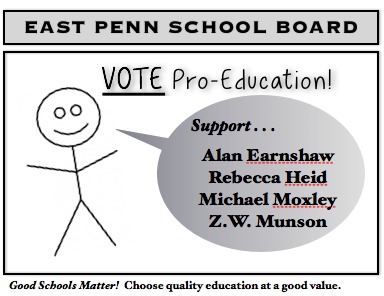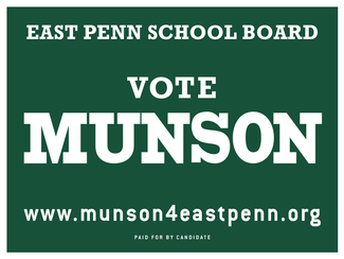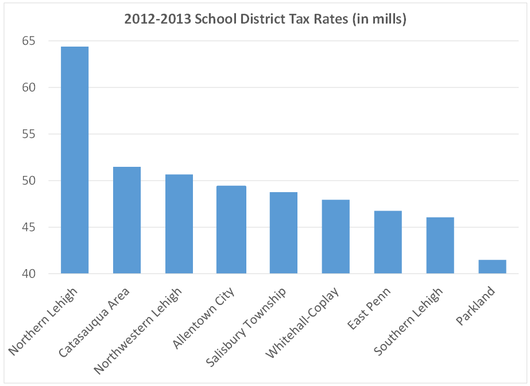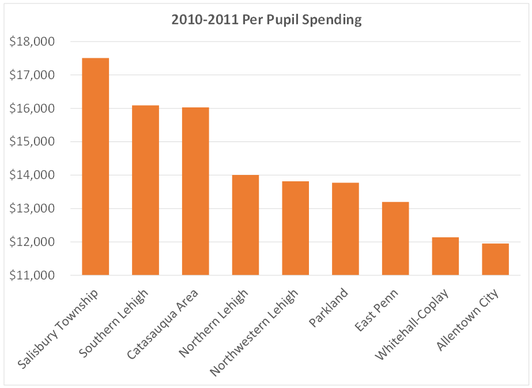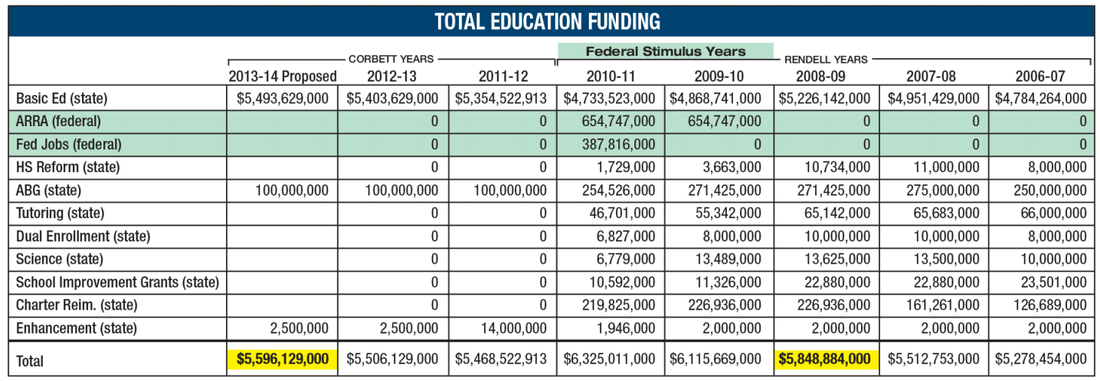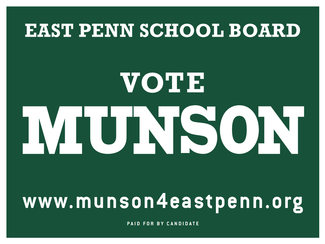 photo credit: nateOne via photopin cc photo credit: nateOne via photopin cc A huge and heartfelt thanks to everyone who has advised me, helped me, and voted for me in this school board campaign. I've been fortunate to have the support of so many people willing to stay informed about the issues and support public education. Thank you. The results from the election are now in, and they include good news and bad news. The good news is that I was one of winners on the Democratic side, and all three other candidates I endorsed-- Alan Earnshaw, Rebecca Heid, and Michael Moxley-- also won. I will be on the ballot in the general election this November! The bad news is that I did not win on the Republican side-- I lost by 73 votes, according to unofficial results. This result is disappointing. But with enough volunteer energy and support this fall, I believe I and the other pro-education candidates in the race can win in the general election. Thanks again for all of your support!
0 Comments
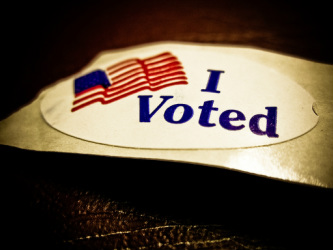 photo credit: Vox Efx via photopin cc photo credit: Vox Efx via photopin cc Tuesday is the election for the East Penn school board. Please vote! If you are unsure of your polling location, you can find it here. This is an important election that will impact our schools and our community. Yet very few eligible voters will actually participate because no national politicians are running. You can make a difference by voting. But you can multiply your impact by calling up just a few friends and neighbors and reminding them to vote too. If every public education supporter got just three additional people to the polls who might not otherwise participate, we would be assured victory for our schools and community. I will be voting for the four candidates that I believe can best balance a concern with public education and a concern for fiscal responsibility:
 photo credit: miuenski via photopin cc photo credit: miuenski via photopin cc School board candidates Garrett Rhoads, Wanda Mercado-Arroyo and Chris Donatelli recently distributed campaign literature that accused me and other candidates of not having "the decency to make themselves available for a public debate." (You can see their flyer in its entirety here.) My record of engagement with the community over the issues at stake in our schools speaks for itself. This flyer says less about me and more about the judgment of the candidates who produced it. More than anything, I'm saddened these candidates have felt they need to resort to negative attacks. Their charges are based on an event held by the organization CEPTA last week (the name of the group is left off their flyer). I did not attend this one meeting for the simple reason that I was not invited. Every other public forum held during this campaign-- both partisan and non-partisan-- extended direct invitations to all candidates via telephone call, email, or both. CEPTA, however, did not invite everyone. I learned of their meeting only indirectly, by reading a published comment made by Patch.com editor Jennifer Marangos, who was invited. An organization that extends direct invitations to individual journalists but not individual candidates is unlikely to provide a venue for open and honest discussion about public education and the needs of our community. I've since learned that candidates in previous years have come to the same conclusion I have regarding CEPTA forums, including our current Republican state representative Ryan Mackenzie. Failing to invite candidates for public office to an event, and then questioning their "decency" for not attending that very same event? I would define decency very differently.  photo credit: kenteegardin via photopin cc photo credit: kenteegardin via photopin cc The East Penn School district budget is of great concern to those of us taxpayers who fund it. But in the heat of debates over the proper levels and sources of funding, it is easy to lose sight of some of the fiscal discipline that the current East Penn administration and school board have provided this community in recent years. As the graph below shows, our school district tax rate is among the lowest in the county. Only Southern Lehigh and Parkland enjoy lower school taxes: If you look at how much money is spent per child in the district, East Penn has one of the lowest per pupil expenditures in Lehigh County too. And we are below the overall state average in this measure: What about administrative costs? We are also below the state average on this measure. According to the Pennsylvania School Boards Association, East Penn employed only one administrator ("manager") per 211 students, compared to the state average of 163 students per administrator.
Tax increases? There will not be any school tax increase this year for East Penn taxpayers. Moreover, in the decade between 2001 and 2011, the overall increase in taxes was only 1% higher than the level of inflation (a compound annual rate of 3.4% compared to 2.4%). None of this information should leave us sitting on our laurels. There are certainly many ways we can make the district more efficient and cut unnecessary costs. But I believe the discussion of how to do so will be most productive if we start with a clear-eyed understanding of the fiscal record of the district in the recent past. It is also possible to cut too much; we should take a practical, rather than ideological, approach to taxes. Our schools deserve the support they need to continue to improve the quality of education. The crisis in the Allentown school system is a sober reminder of what can happen when public education lacks adequate funding. 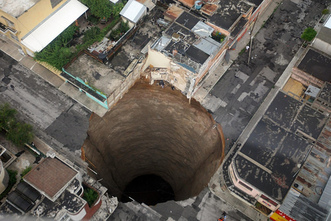 photo credit: horslips5 via photopin cc photo credit: horslips5 via photopin cc When is a sinkhole a firm plot of land? When Governor Corbett shares his view of the education-funding landscape. Corbett tells us his current state budget proposal delivers, "a record amount of state funding into basic education" (a healthy landscape). The reality, however, is that Corbett’s budget creates a $250 million sinkhole in education spending. Why such different pictures? Governor Corbett wants us to look at only the “basic education” line in his budget, which indeed shows record high spending (see table below). Now, look at all those $0s beneath that basic education line--therein lies the sinkhole. Unfortunately, the basic education dollars do not support many of the costs needed to maintain excellent schools. Things like busing. And school buildings. And improvement to science education. When you look at the bottom line, Corbett’s proposed education budget represents more than $250 million in cuts to public education compared with five years ago.
What’s worse, many of the things the state has stopped paying for are required by law, which means local school districts must fund them. The proposed state budget thus effectively transfers many of the costs of education away from state taxes onto local property taxes. As I've written about before, this is is unfair to local taxpayers—particularly seniors and others on fixed incomes who in some cases are taxed out of their lifelong homes. But it doesn’t have to be this way. There are alternative sources of state revenue that Governor Corbett flatly refuses to pursue. For example, Pennsylvania is the only major oil- and gas-producing state that does not tax the resources private corporations extract from oil and natural gas wells (known as a severance tax). If the state implemented even the modest severance tax adopted in Texas-- a decidedly pro-business state in which big energy companies also have much influence-- individual Pennsylvania taxpayers could receive $246 million in tax relief. Not surprisingly, most Pennsylvania citizens support this kind of tax reform. But until such reform is a reality, our education funding will remain hamstrung by ideological arguments in Harrisburg that pretend sinkholes are firm plots of land. And as local taxpayers, you and I will be on the hook to fill the real hole they leave behind. 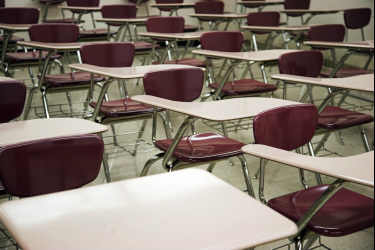 photo credit: dcJohn via photopin cc photo credit: dcJohn via photopin cc Most people agree that motivated, high quality teachers are the most important determining factor in excellent public education. But who makes up the school board is important too. A study by the Iowa Association of School Boards compared the characteristics of school board members in high performing districts with those in low performing districts. What they found was that the school boards themselves had an important impact on the quality of schools. More specifically, school boards that set high standards, were deeply knowledgeable about teaching and learning, created a supportive environment for teachers and staff, involved their communities, and used data to make decisions, produced far better results than those which didn't. There are real differences between the candidates for the East Penn school board on many of these dimensions. Who will set high standards? Who is knowledgeable about teaching and learning? Who will create a supportive environment for teachers and staff? Who will listen? Who has the most experience working with complex data? As you plan your vote in the election primaries one week from today, I hope you will consider how the candidates compare on these dimensions.  photo credit: truthout.org via photopin cc photo credit: truthout.org via photopin cc One of the chief obstacles to making meaningful, positive improvements in the East Penn School district is a small but vocal minority in our community who insist on viewing the issues we face in largely partisan terms. The first question they ask is not whether a candidate, an idea, or a proposal is a good one, but whether or not it is "Republican" or "Democratic." This is a foolhardy and dangerous approach. Foolhardy because most of the issues faced by public education and the taxpayers who support it are complex and require careful and balanced judgment based on facts. They cannot be successfully addressed with the tired and simplistic ideological sound bites of the political parties-- Republican or Democratic. Why would anyone want to use the model of partisan pettiness and gridlock that characterizes Washington DC and Harrisburg here in our local community? But partisanship is also dangerous. A number of scientific studies published in just the last few months show how political partisanship actually clouds judgment and makes it difficult for people to express or act on accurate information. The studies demonstrate that people make less accurate assessments of the economy, neglect the soundness of arguments, and ignore their own personal experience in "Republican vs. Democratic" contexts compared to when political partisanship isn't an issue. Put simply, partisanship hurts our ability to make the best possible choices for our community. Dr. Claude Fischer of the University of California summarizes this research on his blog. You can also access the individual research studies-- completed at Princeton, Northwestern, Columbia, Stanford, and Aarhus University-- directly through these links:
I'm proud that the many yards signs promoting my school board campaign are equally distributed in the front yards of Republicans and Democrats. And I am committed to meeting the challenges of the East Penn school district in a balanced, inclusive and fair way that reflects careful judgment of facts, not blind partisanship. 
Many economists have conducted studies on the role of public schools in driving a community's economic prosperity. The data show that the quality of our schools help make us more economically competitive: excellent schools spur local entrepreneurship and attract state, regional, and national businesses; they lead to higher wages in the community, which in turn support existing business enterprises; and they encourage our brightest and most motivated young men and women to return to the area after college, contributing to social stability and tax base growth. And this list doesn't even include their positive impact on our property values, which I've written about elsewhere.
In short, schools are one of the best possible economic investments our community can make. Public education provides economic benefits to everyone in the community, not just students. Want more specific facts and figures? An easy to understand summary of this research is available in a report by Jonathan Weiss of George Washington University, "Public Schools and Economic Development: What the Research Shows." Dr. Gerald Gordon covers some of the same ground in the short video below. Dr. Gordon is the CEO of the Economic Development Authority in Fairfax County VA, and author of 12 books and dozens of articles on economic development and management.  photo credit: EricGjerde via photopin cc photo credit: EricGjerde via photopin cc The East Penn School District, like any large bureaucracy, generates its share of waste and inefficiencies. As I've met community members in this campaign, teachers, custodians, maintenance staff, and others who work in the district have all shared with me specific examples of waste in the East Penn schools. One of the best ways to combat this problem is to develop a culture (and a concrete procedure) that encourages all employees to report waste and inefficiency in a safe and constructive way. At the same time, the mantra of "cutting waste" will not magically cure the pressure on the public school budget. How should we think about the bigger issues? I would propose three basic principles in approaching the larger budget questions: (1) A long-term approach to budgeting. Cutting $1,000 to fix a leaky roof from the budget today is short-sighted if it means we will have to pay $100,000 to repair the damage caused by the leak in a few years. (See my separate post on this subject.) (2) Cost-cutting proposals should be specific. Calling for budget cuts in general makes for good political theater, but it takes both knowledge and leadership to propose actual cuts that might improve the district's finances. (3) Balance. Fiscal responsibility must be balanced again the need of our community for excellent schools-- public education is itself an important pillar of our community's economic fortunes. 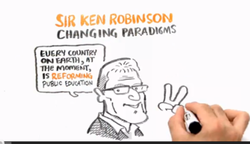 I've written a number of times about the need for schools to change in fundamental ways to meet the needs of today's society and economy. The information revolution poses significant challenges to some of the most basic ideas we all hold about public schools; ideas originally developed in the wake of the industrial revolution, a far different time. Ken Robinson made this point several years ago in a talk that has been viewed by millions since he gave it in 2006. Sadly, little has been done to address the issues he raises in the seven years since. The talk is well worth its 12 minutes, if you haven't seen it already (and don't be distracted by the controversial claims he makes about ADHD in the middle; they are not central to his main point). |
Details
Categories
All
Archives
December 2017
|
